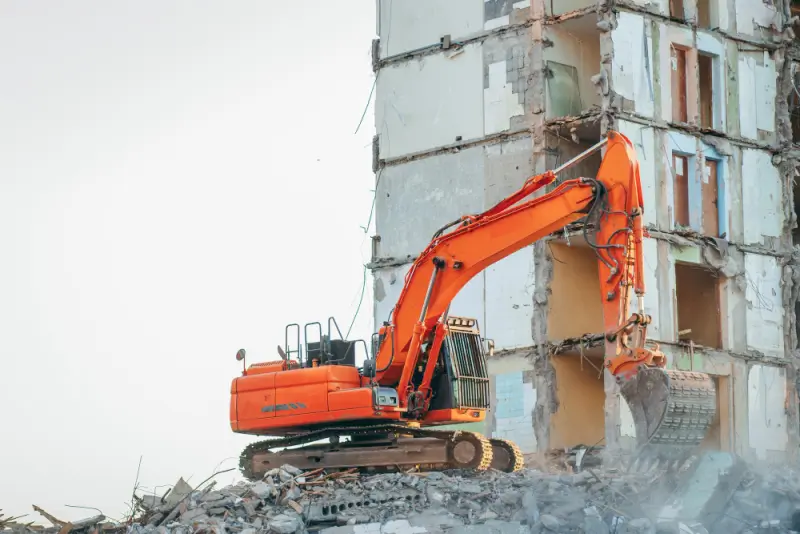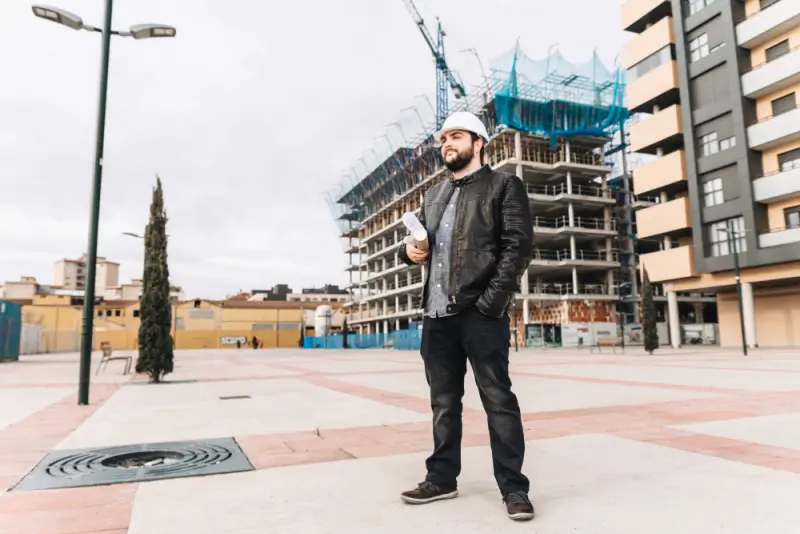Look, I've been in construction long enough to know that most project disasters start the same way – with someone saying "we'll figure it out as we go."
Last month, I watched a perfectly good contractor lose $15,000 on a kitchen remodel because he didn't plan his workforce properly. Had his tile guy show up three days before the plumber finished roughing in. Guess who stood around getting paid to wait?
That's the thing about our industry. You can have the best materials, the fanciest tools, and decades of experience, but if you don't plan right, you're gonna get burned. And with labor shortages hitting every trade, good planning isn't just nice to have anymore – it's survival.
Why Construction Planning Is Actually Hard
Most people think construction planning is just making a schedule and ordering materials. If only it were that simple.
You're basically trying to orchestrate a symphony where half the musicians might not show up, the weather keeps changing the venue, and the city inspector decides to rewrite the music halfway through. Oh, and your client just decided they want to add a violin section.
The numbers don't lie either. The industry needs over 400,000 more workers by next year. I don't know about you, but finding a decent electrician in my area already takes three phone calls and a prayer. The contractors who've figured out how to plan for this stuff? They're booked solid while the rest of us are scrambling.

The Five Things That'll Make or Break Your Project
1. Actually Know What You're Building
Sounds obvious, right? But I bet you've started jobs where the scope was about as clear as mud.
I learned this lesson the hard way on a "simple" bathroom renovation that turned into gutting half the house. Client kept saying "whatever you think is best" until we were three weeks in and suddenly they had very specific opinions about everything.
Now I break everything down:
What exactly are we building?
When does each phase need to finish?
What happens if permits take longer than expected?
How much flexibility do we have if weather hits?
Don't just plan for perfect conditions. Plan for Tuesday in the real world.
2. Your Crew Is Everything
Here's what nobody tells you about workforce planning – it's not about having enough people. It's about having the right people at the right time.
I've seen guys with 20 framers and no electrician, wondering why their project is stuck. I've seen others with one superstar who does everything, until he throws out his back and the whole job stops.
Smart planning looks like this:
Map out what skills you need week by week
Know your peak periods before they hit you (usually 2-3 weeks into major phases)
Cross-train people so you're not dependent on one guy
Build relationships with staffing companies who actually understand construction
You need time for permits, financing, and lining up your crew. The earlier you start planning, the more options you have when problems show up. Most projects need 3-6 months of lead time, but complex commercial jobs require a year or more.
The contractors getting this right have 25% fewer delays than those winging it. That's the difference between profit and breaking even. They also report better relationships with clients because they can communicate realistic timelines upfront instead of making promises they can't keep.
3. Money Stuff (The Part Nobody Likes)
I get it. You'd rather be building than doing spreadsheets. But I've watched too many good contractors go under because they didn't track costs properly.
Your estimate needs to include more than just materials and labor:
Permits (and they're never as cheap as you think - budget 2-5% of project cost)
Insurance that actually covers what you're doing
Equipment rental for stuff you don't own
Waste disposal and cleanup costs
That 10-15% buffer for when Murphy's Law kicks in
Pro tip from someone who learned this the expensive way: use real numbers from recent jobs, not what you hope things will cost. Lumber prices don't care about your feelings. I keep a spreadsheet of actual costs from the last 12 months because material prices swing more than a playground these days.
Think of planning costs as insurance against disaster. Spending 5-10% of your budget upfront on thorough planning typically saves you 15-20% overall by preventing expensive mistakes, delays, and rework. I'd rather explain higher upfront costs to a client than explain why their project is over budget and behind schedule.
4. Plan for Things to Go Wrong
Twenty years in this business has taught me one thing: if something can go sideways, it will. Usually on a Friday afternoon when everyone's already gone home.
Smart contractors always have:
Backup suppliers (because your main guy will run out of materials at the worst possible moment)
Alternative crews (because people get sick, quit, or get better offers)
Modified schedules for weather (especially if you work anywhere with actual seasons)
Safety plans that work in real conditions, not just on paper
I learned this lesson during a particularly brutal winter when my primary concrete supplier couldn't deliver for two weeks. The contractors with backup suppliers kept working while the rest of us sat around watching our schedules fall apart. Now I maintain relationships with at least two suppliers for every critical material.
Building flexibility into your schedule doesn't mean padding everything with extra time - it means having specific backup plans ready to implement. Weather delays are inevitable, but having indoor work ready when outdoor work gets rained out keeps your crew productive and your timeline intact.
5. Communication That Actually Works
Most problems on job sites come down to one thing: nobody talked to each other properly.
The electrician didn't know the HVAC guy was changing the ductwork. The client never mentioned they wanted to move the kitchen island. The inspector showed up expecting something completely different than what you built.
Here's what works in real life:
Quick daily check-ins with your crew (not meetings that kill half the morning)
Weekly updates for clients (before they start calling you with questions)
Real-time updates when plans change (because they always do)
One place where everyone can find the current drawings and schedules
The key is finding communication systems that people actually use. I've seen fancy project management systems that looked great in demos but nobody touched after the first week. The best system is the one your crew will actually check and update consistently.
Most problems on job sites trace back to someone not getting the message. The electrician didn't know the HVAC guy was changing the ductwork. The client never mentioned they wanted to move the kitchen island. The inspector showed up expecting something completely different than what you built. Good communication systems prevent these surprises.
Technology That Doesn't Suck
I'm not going to tell you to replace your crew with robots. But there are some tools that actually make life easier instead of just adding more complications.
Three-quarters of contractors are planning to use new tech to solve problems. The smart ones are picking tools that solve real problems:
Building Information Modeling shows you conflicts before you build them - like when the ductwork runs right through where the plumber wants to put the main water line. Cloud-based project management keeps everyone looking at the same information instead of working off outdated prints. Mobile apps let your crew update you from the field without drowning in paperwork.
Some AI scheduling tools are getting pretty good at optimizing timelines and predicting bottlenecks before they happen. The key is finding stuff that saves you time and solves real problems, not fancy features that look cool in demos but nobody uses after the first week.
I've watched contractors spend thousands on software they never learned to use properly. Start with simple tools that solve obvious problems, then add complexity as your team gets comfortable with the technology.
Where People Usually Mess Up
Not Planning for Enough People
Here's a stat that should scare you: 61% of construction projects run late because they can't find enough workers.
It's not that the workers don't exist. They're just working for contractors who planned better and got to them first.
The fix is simple but not easy: use real data to figure out workforce needs. Build relationships with staffing companies who know the difference between a rough carpenter and a finish carpenter. Start recruiting before you need people, not after.
Ignoring Murphy's Law
Murphy was definitely a contractor. Everything that can go wrong will go wrong, usually at the worst possible time.
Projects without backup plans crash and burn when problems hit. And problems always hit.
Build flexibility into everything. Have backup suppliers on speed dial. Know multiple subs in each trade. Keep buffer time in your schedule. It's not pessimism – it's reality.
Playing Telephone with Information
Ever play that game as a kid where you whisper something to one person, they whisper it to the next, and by the end it's completely different?
That's what happens on construction sites without good communication systems. "Install the fixtures Tuesday" becomes "maybe do something with lights sometime this week."
Use project management software that keeps everyone informed automatically. Have one source of truth for schedules, plans, and changes. When something changes, make sure everyone knows at the same time.
How to Actually Plan a Project
Weeks 1-2: Foundation Work
Start by nailing down exactly what you're building. I mean exactly – down to fixture brands and paint colors if possible. Walk the site with fresh eyes and look for problems. Start your permit applications now, not later. Draft a realistic timeline that accounts for real-world delays.
Weeks 3-4: The Heavy Lifting
Break your project into detailed phases that make sense. Get realistic cost estimates based on current prices, not last year's numbers. Figure out your workforce needs for each phase. Set up safety protocols that your crew will actually follow, not just stuff that looks good on paper.
Weeks 5+: Build and Adapt
Start construction with your plan as a guide, not a rigid rulebook. Check progress against your plan every week. Adjust when reality doesn't match expectations (it won't). Keep everyone informed of changes as they happen.
What's Coming Next
The industry keeps changing, and the contractors who adapt are the ones who'll thrive.
Modular construction and prefab are changing how we plan projects. Instead of building everything on-site, more components are coming pre-built. AI is getting better at predicting delays before they happen. Drones are making site surveys way more accurate than walking around with a tape measure.
Sustainable building requirements are coming whether we're ready or not. Remote collaboration tools are getting better, especially useful when your team is spread across multiple sites.
The companies adapting to these changes while keeping their basic planning solid? They're going to own the next decade.
Questions Everyone Asks
Q. When should I start planning?
A. Start 3-6 months before breaking ground. Big commercial jobs need a year. Early start = more options when problems hit.
Q. How much should I spend on planning?
A. Budget 5-10% of total project cost. Saves you 15-20% overall by preventing costly mistakes.
Q. How do I handle seasonal workforce issues?
A. Build relationships with staffing partners early. Plan peak periods months ahead. Offer retention bonuses.
Q. What's the biggest planning mistake?
A. Ignoring workforce planning. You can have perfect schedules, but without the right people, you're stuck.
Q. Is planning software worth it for smaller companies?
A. Absolutely. Pays for itself on the first job through time savings and better coordination.
Q. How do I plan for weather delays?
A. Build buffer time into weather-dependent tasks. Keep indoor backup work ready. Watch forecasts proactively.
Q. What happens when plans go sideways anyway?
A. They always do. Good planning gives you options. Bad planning leaves you scrambling and losing money.
Q. How do you balance detailed planning with staying flexible?
A. Plan thoroughly but build in flexibility points. Have backup options ready. Review and adjust weekly.
Q. What's the difference between workforce planning and just hiring people?
A. Workforce planning maps skills to project phases months ahead. Regular hiring is reactive scrambling when you're already behind.



